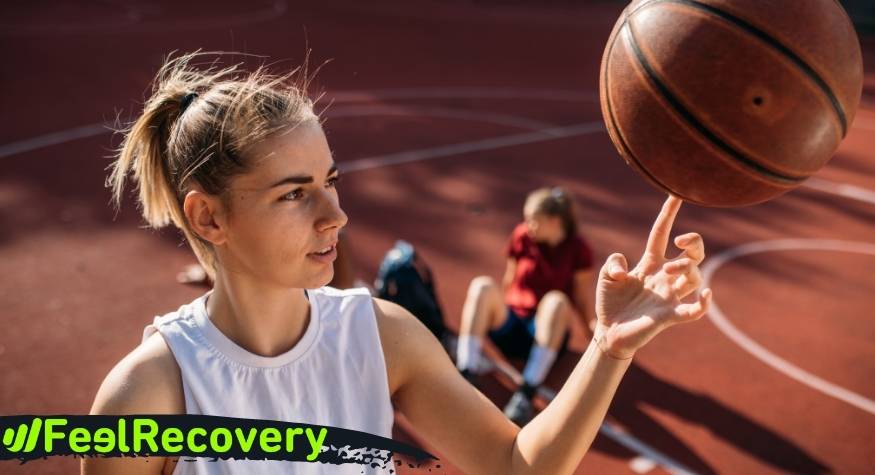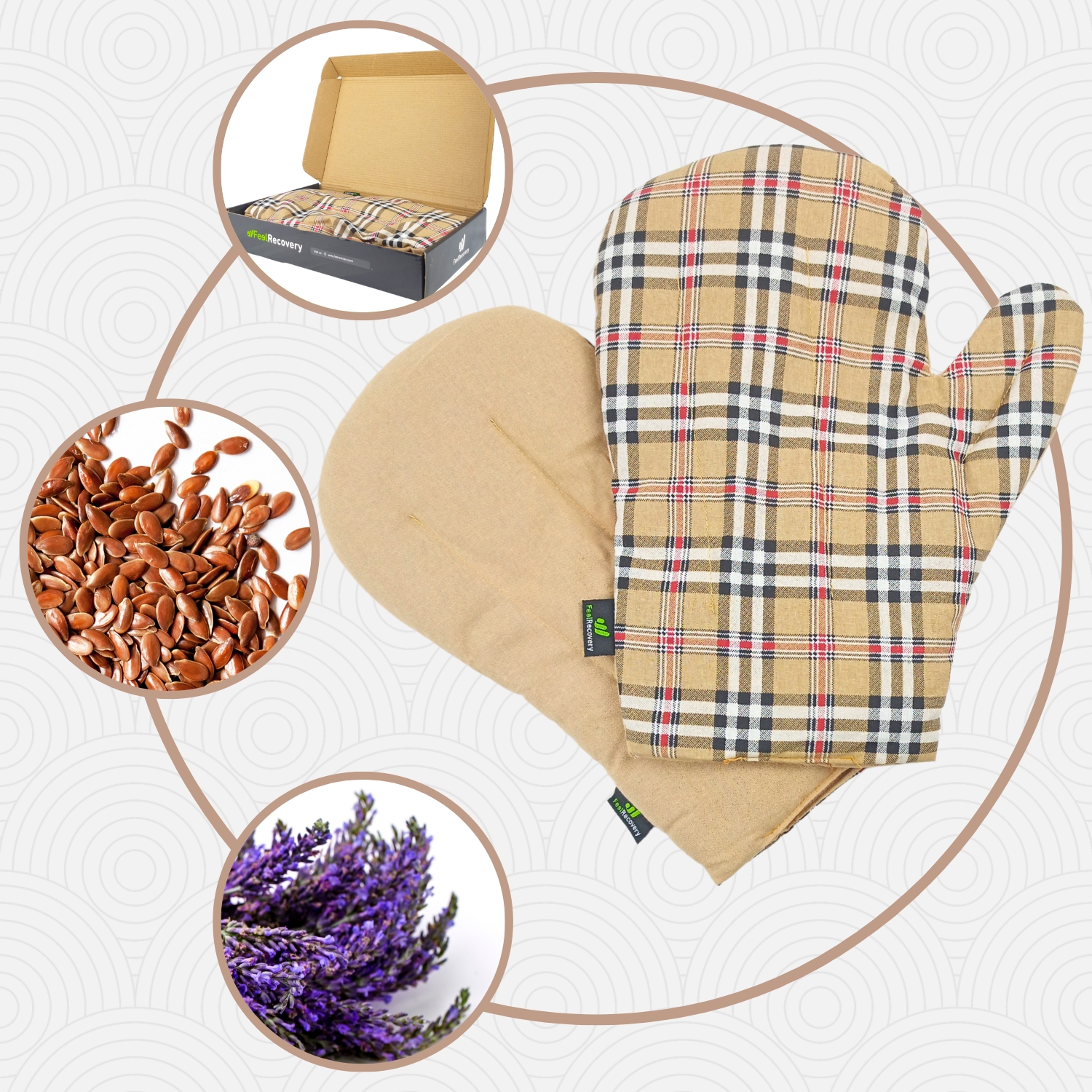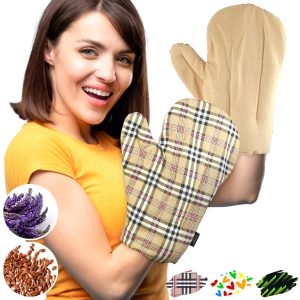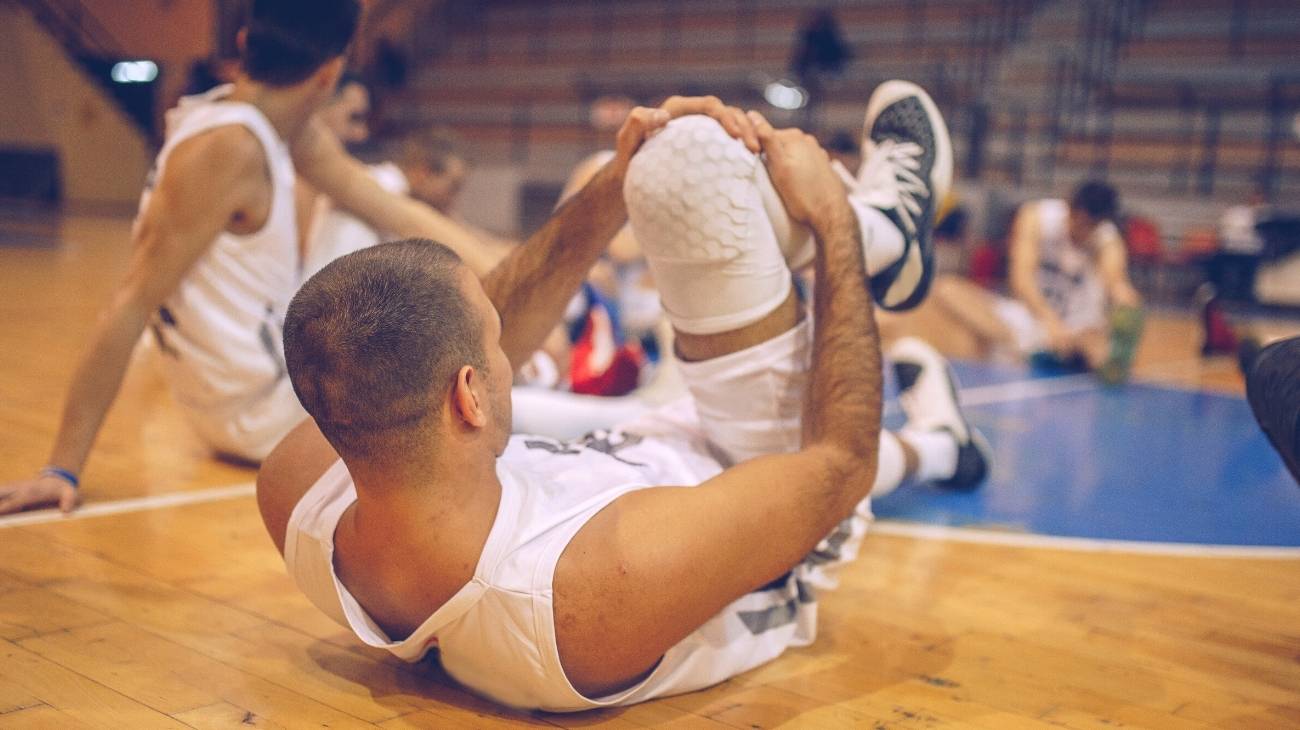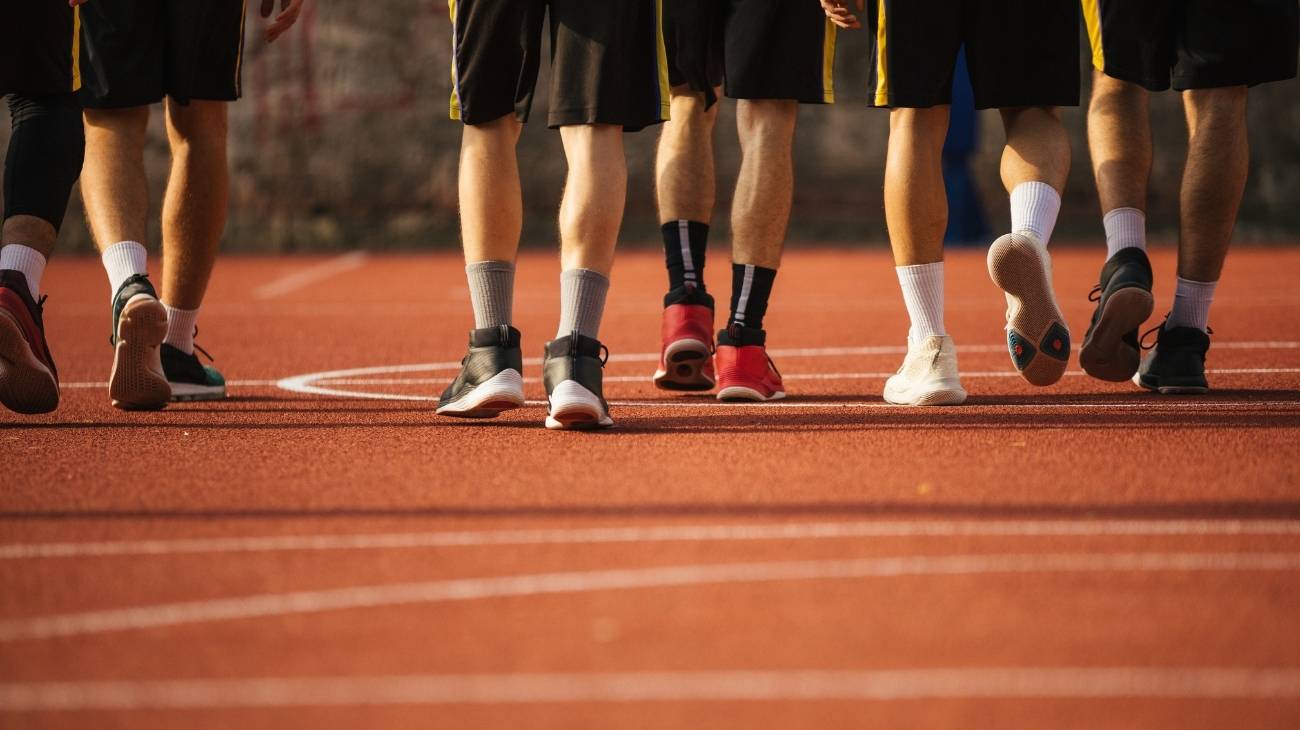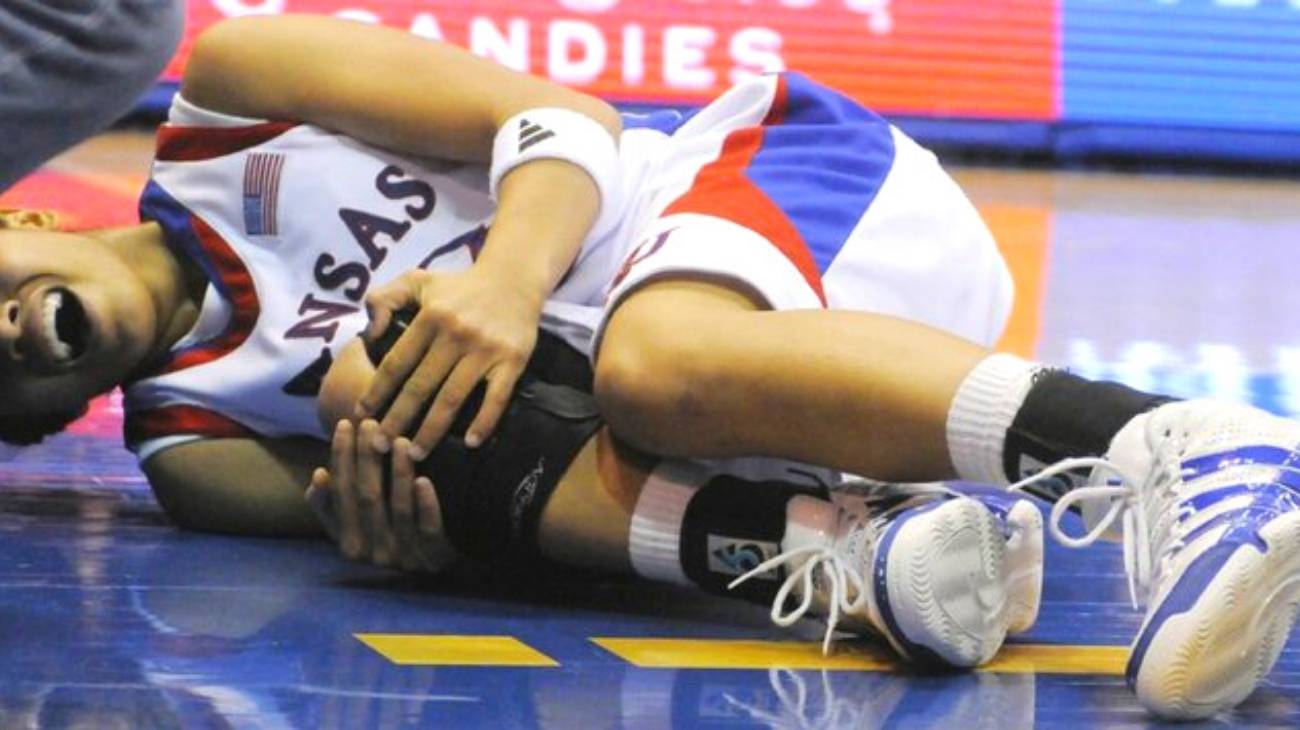On average, a basketball game lasts about 40 minutes and during that time the body is pushed to its limits. In this article you will find the most common wrist, hand and finger injuries, such as dislocations and fractures, that you should know about.
We also explain the PRICE therapy that you should apply during the first few minutes after an injury. Finally, we show you the best products available to make overcoming an injury a faster process.
What are the most common types of hand, finger and wrist injuries when playing basketball?
As in any sport, the entire body is at risk of suffering a minor or serious injury if the basketball player does not take the foresight to warm up properly before each game, or if his or her body is not prepared for the demand.
Here are the most common ailments to which professional and amateur basketball players are exposed:
Finger dislocations
In order for the ball not to be intercepted, players must pass the ball with force and power, making it reach a considerable speed. If the passer's hand is not firm enough or the fingers are in the wrong position, a dislocation, which occurs when a bone comes out of its joint, can occur.
Immediately there will be severe pain and the movement of the affected finger will be almost completely limited. The best thing to do is to let a specialist put the finger back in place, and then apply physiotherapeutic treatment to repair the damage that the ligaments will certainly suffer.
Shoulder dislocations
This occurs when a strong blow causes the head of the humerus to slip out of the shoulder joint, which can then move forwards or backwards. It is mainly caused by falls rather than by contact between players and can be a total dislocation when the bone is pushed completely out of the joint or a subluxation, when the bone is partially displaced.
What needs to be done is to reposition the humerus back into place and then the RICE therapy is applied to reduce pain as much as possible. As a general rule, a specialist should be seen to detect the extent of the injury, as the ligaments are sometimes involved due to overextension of the joint.
Fracture of the distal radius epiphysis
The radius is the largest bone in the forearm and the end on the wrist side is called the disc end. A fracture at this point occurs when the area of the radius near the wrist is broken.
The radius is the most commonly fractured bone in the arm and almost always occurs less than 1 inch from the end closest to the wrist, which can occur either from a fall in a game or from a strong block by an opponent to prevent you from making a basket. Fractures of this type are more difficult to treat than others, so this injury should not be underestimated and should always be monitored by a specialist.
Scaphoid fracture
This is a break of one of the smallest bones in the wrist. It usually occurs after a fall on a completely outstretched hand due to a bad fall after a jump or after a collision with an opponent that causes us to fall and instinctively we use our hand to minimise the impact with the ground.
It can also happen if the player slips (something quite common) and uses his hand open and outstretched to avoid a painful fall, this being the one that receives all the impact. When this injury occurs, a sharp and severe pain is felt at the base of the thumb, usually requiring complete cessation of physical activity.
Lateral sprain
This is another injury caused by a fall, rather than contact with another player or atypical movement. The wrist is hit hard when the hand hits the ground and gives way to a ligament injury, a traumatic stretching or strain of the ligament fibres. It occurs most frequently in the elbow, wrist and thumb. The most commonly injured ligament is the ligament connecting the scaphoid to the lunate, called the scapho-semilunate ligament.
Finger fractures
There are three bones in each finger called phalanges, all of which are prone to break in the event of trauma during training or a match. A fracture occurs when one of the phalanges cracks or breaks into one or more pieces that must then be joined together and immobilised. The phalanges are one of the most fragile parts of the body, and even if the ball is picked up badly (and at high speed), they can break.
Best products for hand and wrist injury recovery in basketball
Bestseller
-
Acupressure Mat and Pillow (Black/Gray)
$49.95 -
Acupressure Mat and Pillow (Green/Navy)
$49.95 -
Acupressure Mat and Pillow (Pink/Bordeaux)
$49.95 -
Foot Massage Roller for Plantar Fasciitis (Black)
$19.95 -
Foot Massage Roller for Plantar Fasciitis (Green)
$19.95 -
Foot Massage Roller for Plantar Fasciitis (Pink)
$19.95 -
Microwave Arthritis Gloves (2 Mittens) (Hearts)
$29.95 -
Microwave Arthritis Gloves (2 Mittens) (Oxford)
$29.95 -
Microwaveable Heating Pad for Pain Relief (Hearts)
$19.95 -
Microwaveable Heating Pad for Pain Relief (Oxford)
$19.95 -
Microwaveable Heating Pad for Pain Relief (Sport)
$19.95 -
Wrist Brace (Black/Gray)
$19.95 -
Wrist Brace (Green/Navy)
$19.95 -
Wrist Brace (Pink/Bordeaux)
$19.95
How to apply the RICE therapy to treat hand and wrist injuries in basketball?
The RICE therapy is a series of steps to follow to treat injuries that occur during a game, being considered first aid so that the symptoms of the injury can be alleviated immediately.
Today it is known as the PRICE therapy and the steps to follow to apply it are as follows:
- Protection: This phase is the last to be added to the method. The affected hand is covered to protect it from possible blows that could aggravate the injury, which is very common in the case of sprains and fractures. This can be done with a bandage or with restraining instruments such as a tourniquet.
- Rest: Sports physicians suggest that after an injury the hand should be given complete rest. The muscle, ligaments and other affected parts should be given a chance to recover on their own. The last thing we should try to do is to move the hand immediately, as this can increase the severity of the injury.
- Ice: In the absence of an analgesic, ice acts as a pain and inflammation reliever. Combined with an analgesic spray, it is more effective in stopping swelling and reducing pain. Specialists recommend not to get carried away by the temporary relief effect of ice, as it is likely that when physical activity is resumed, a new, more serious injury may occur.
- Compression: This is mainly used to control oedema when it becomes excessive and very pronounced. Elastic bandages should be applied and the hand bandaged from the wrist to the fingers, wrapping the limb. But be careful not to compress too tightly as there is a risk of causing localised ischaemia and aggravating the symptomatology of the injury.
- Elevation: In this phase, it is advisable to raise the injured hand above the level of the heart. This favours venous return and helps to reduce oedema. Dorsiflexion exercises are also recommended if the patient feels that the pain is tolerable. These movements help to determine whether the injury is a sprain or a sprain or possible fracture.
References
- Rettig, A. C. (1998). Epidemiology of hand and wrist injuries in sports. Clinics in sports medicine, 17(3), 401-406. https://www.sciencedirect.com/science/article/abs/pii/S0278591905700922
- Wilson, R. L., & McGinty, L. D. (1993). Common hand and wrist injuries in basketball players. Clinics in sports medicine, 12(2), 266-291. https://www.sciencedirect.com/science/article/abs/pii/S027859192030435X
- Avery, D. M., Rodner, C. M., & Edgar, C. M. (2016). Sports-related wrist and hand injuries: a review. Journal of orthopaedic surgery and research, 11, 1-15. https://link.springer.com/article/10.1186/s13018-016-0432-8
- Rettig, A. C. (2003). Athletic injuries of the wrist and hand. The American journal of sports medicine, 31(6), 1038-1048. https://journals.sagepub.com/doi/abs/10.1177/03635465030310060801
- Angermann, P., & Lohmann, M. (1993). Injuries to the hand and wrist. A study of 50,272 injuries. Journal of hand surgery, 18(5), 642-644. https://journals.sagepub.com/doi/abs/10.1016/0266-7681%2893%2990024-A
- Harmer, P. A. (2005). Basketball injuries. Epidemiology of pediatric sports injuries: Team sports, 49, 31-61. https://www.karger.com/Article/Abstract/85341
- Newman, J. S., & Newberg, A. H. (2010). Basketball injuries. Radiologic Clinics, 48(6), 1095-1111. https://www.radiologic.theclinics.com/article/S0033-8389(10)00121-1/fulltext
- Trojian, T. H., Cracco, A., Hall, M., Mascaro, M., Aerni, G., & Ragle, R. (2013). Basketball injuries: caring for a basketball team. Current sports medicine reports, 12(5), 321-328. https://journals.lww.com/acsm-csmr/Fulltext/2013/09000/Basketball_Injuries___Caring_for_a_Basketball.13.aspx
- Borowski, L. A., Yard, E. E., Fields, S. K., & Comstock, R. D. (2008). The epidemiology of US high school basketball injuries, 2005–2007. The American journal of sports medicine, 36(12), 2328-2335. https://journals.sagepub.com/doi/abs/10.1177/0363546508322893
- Zelisko, J. A., Noble, H. B., & Porter, M. (1982). A comparison of men’s and women’s professional basketball injuries. The American journal of sports medicine, 10(5), 297-299. https://journals.sagepub.com/doi/abs/10.1177/036354658201000507

